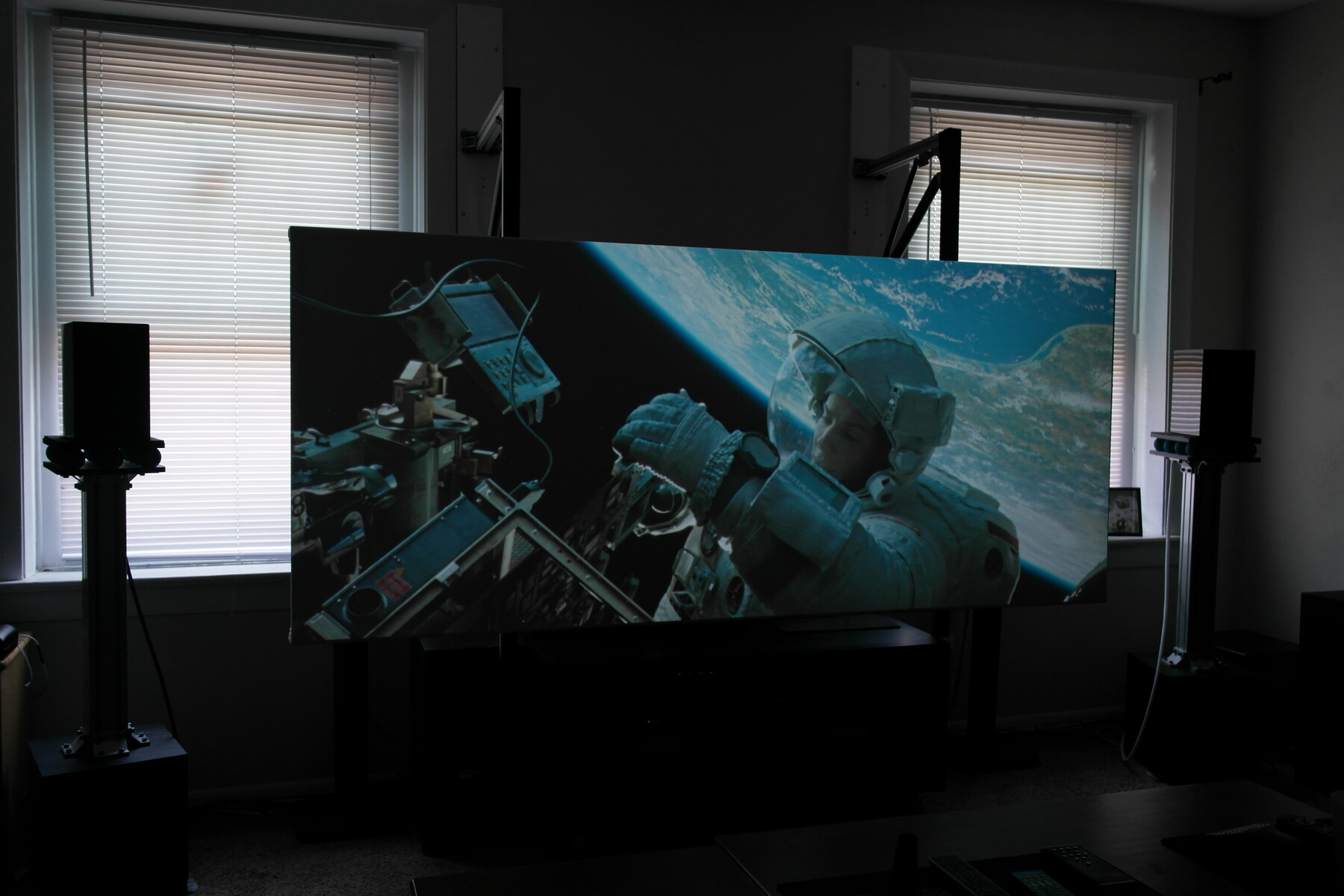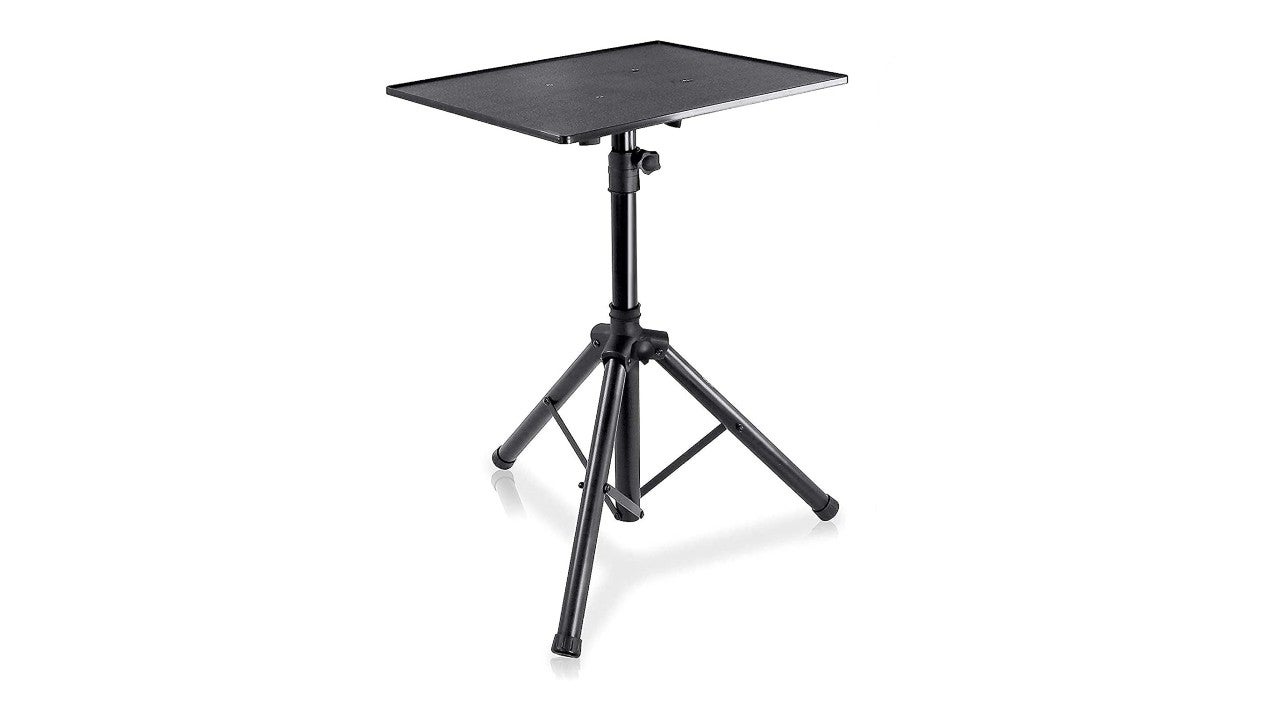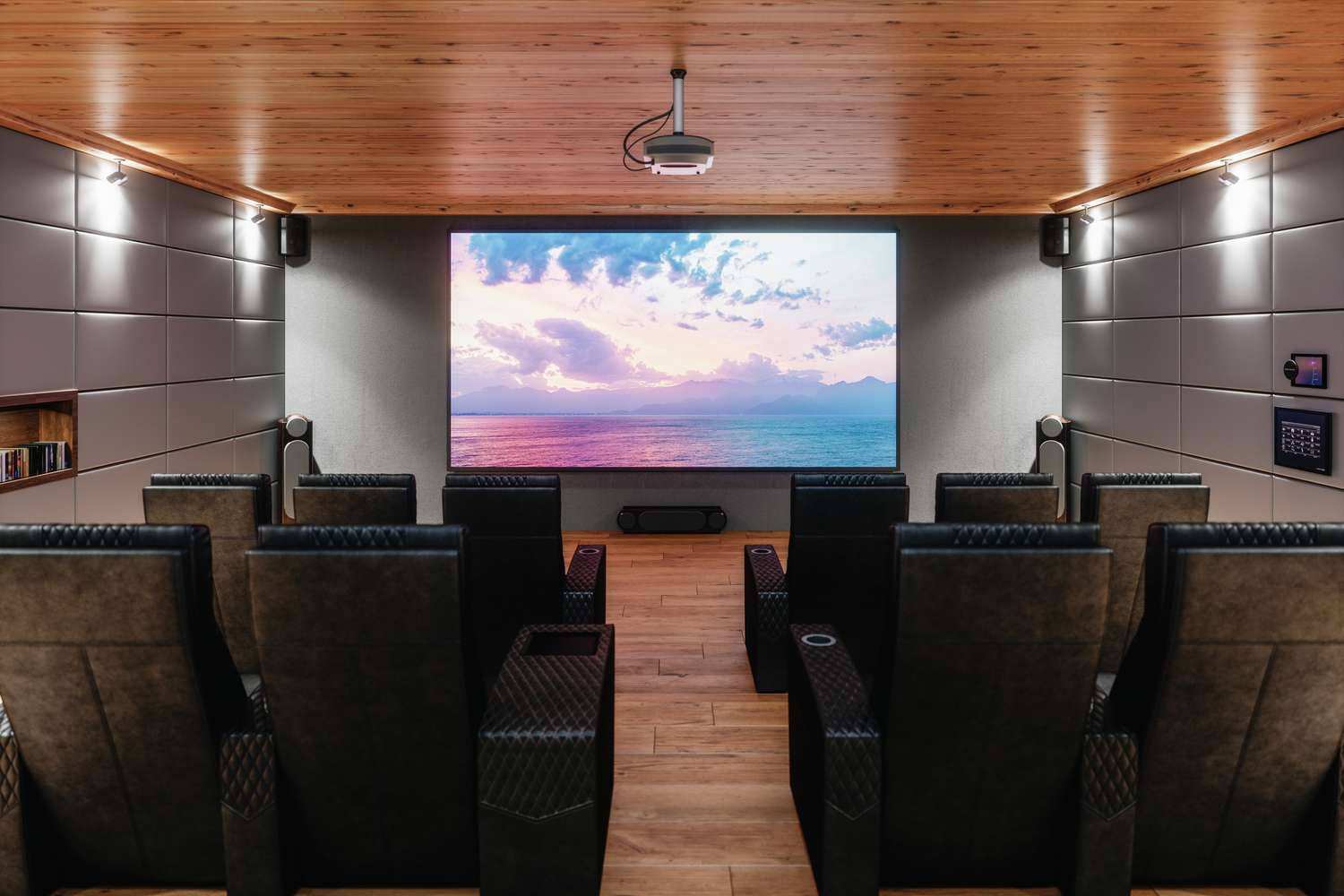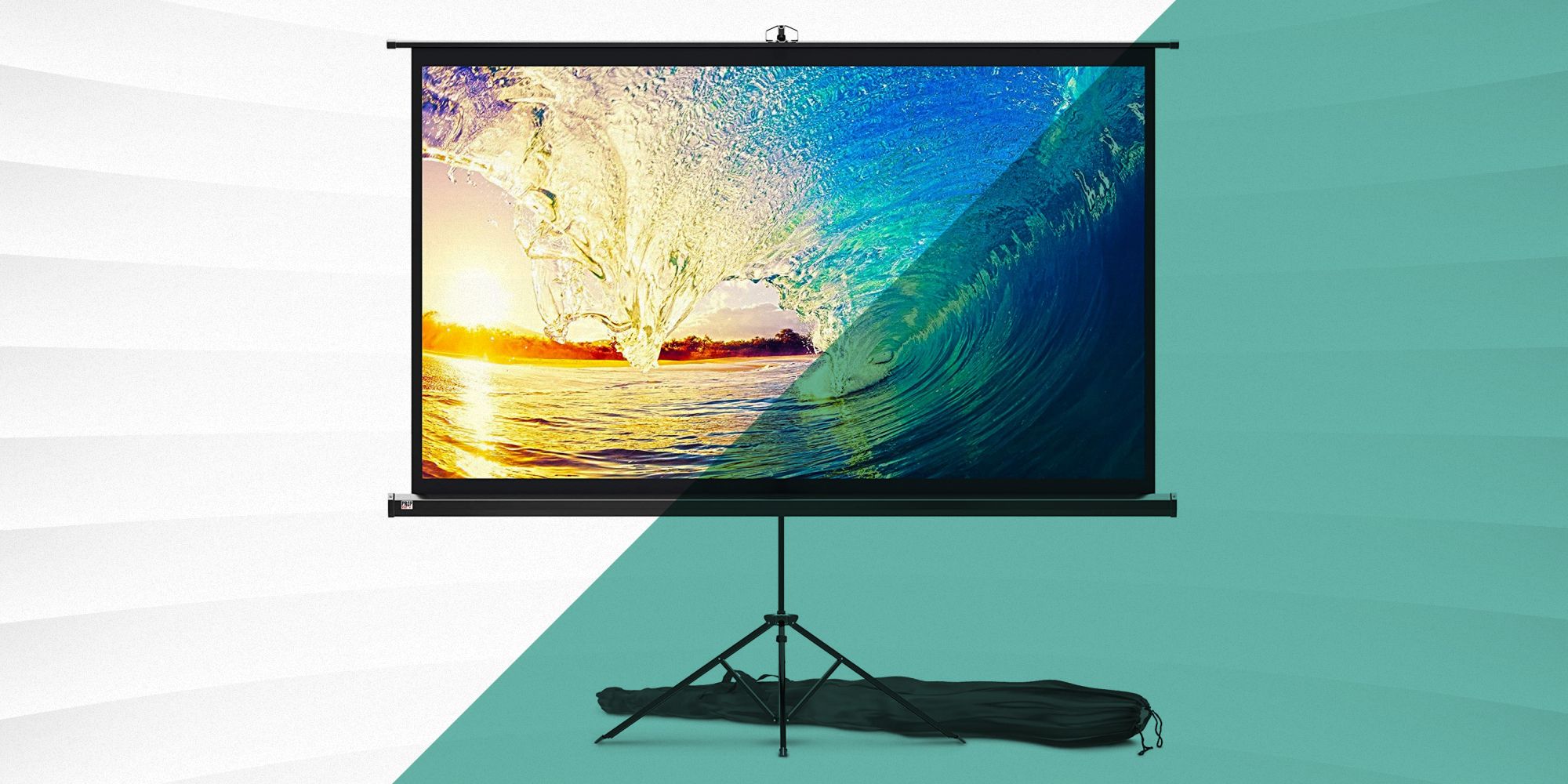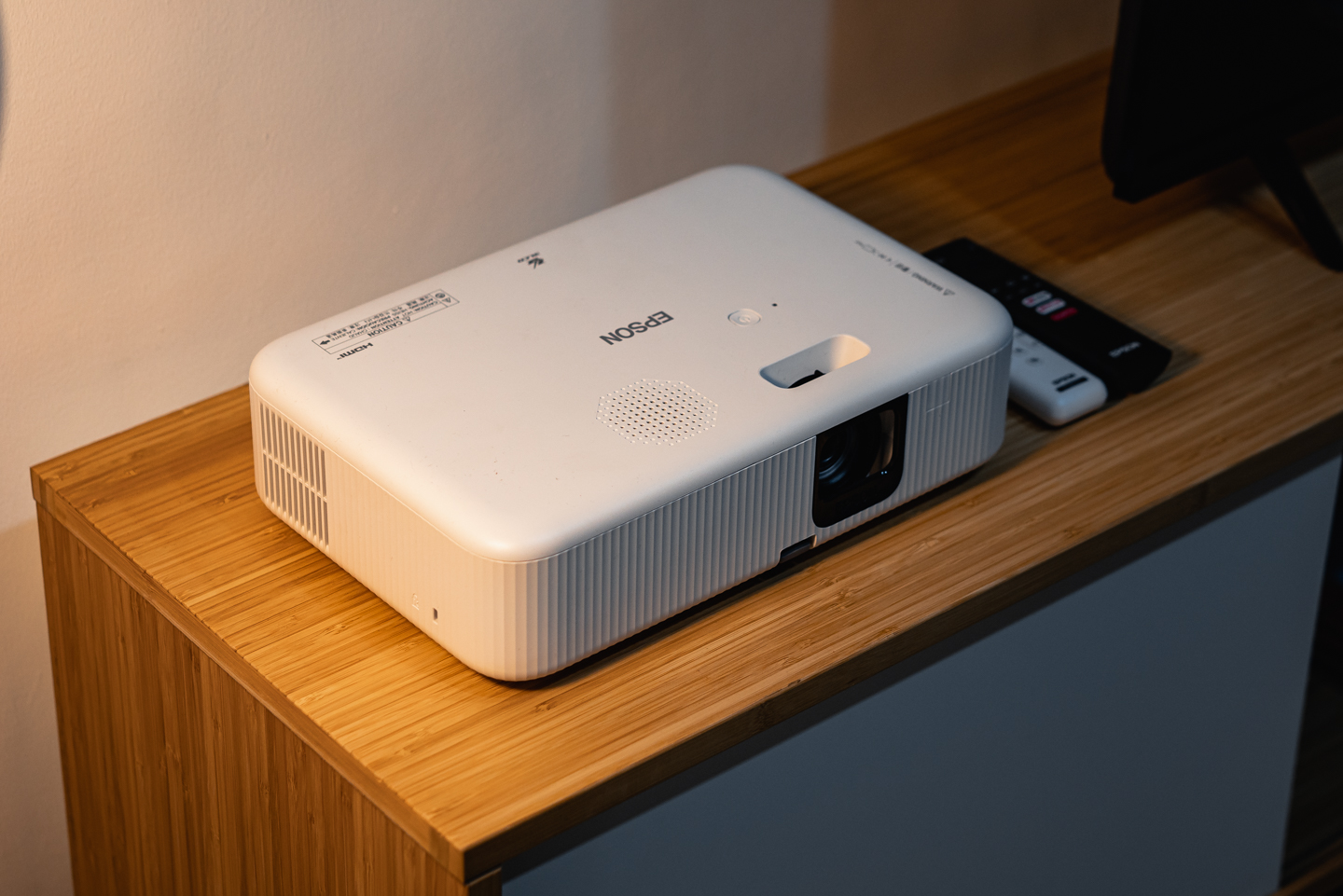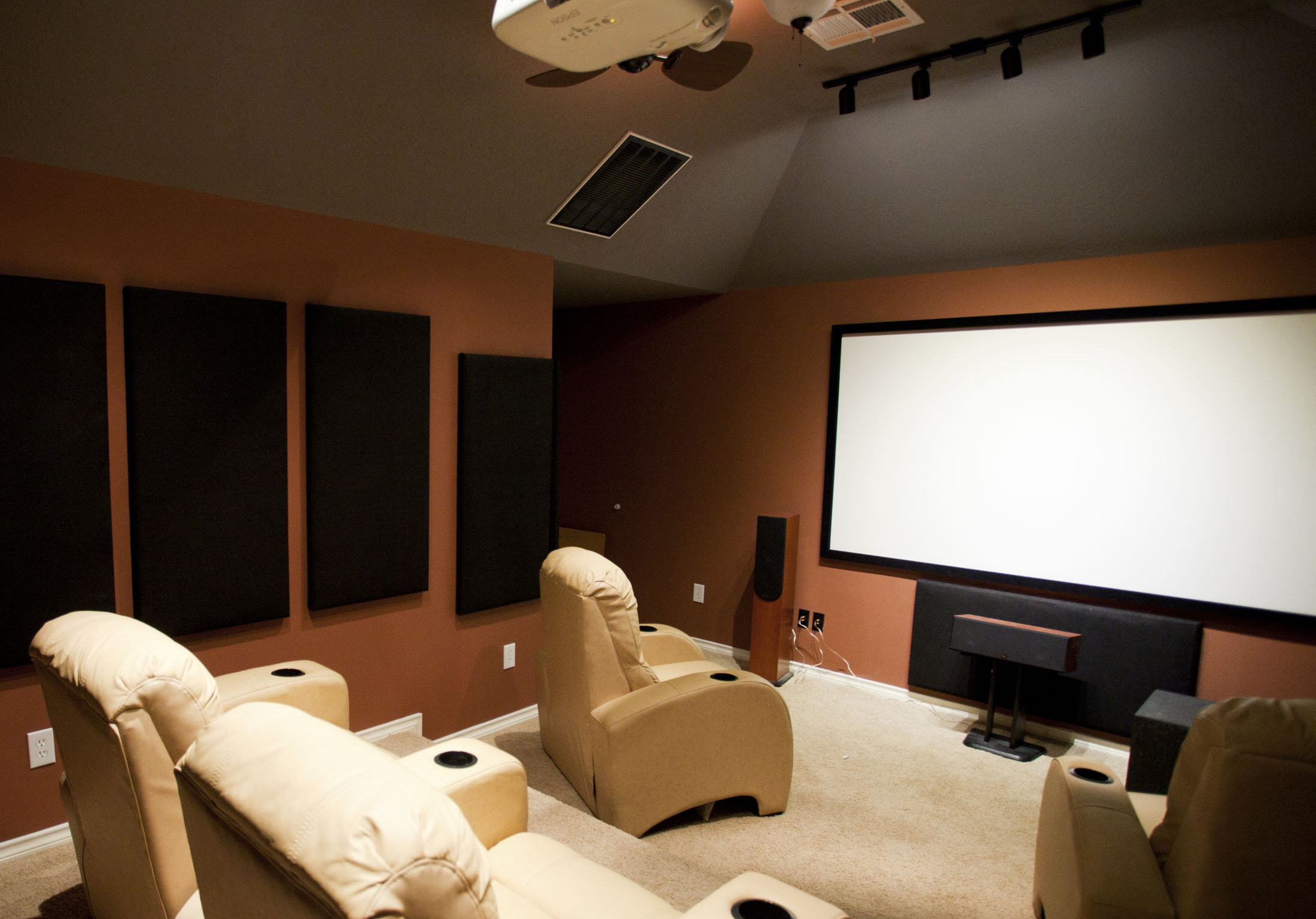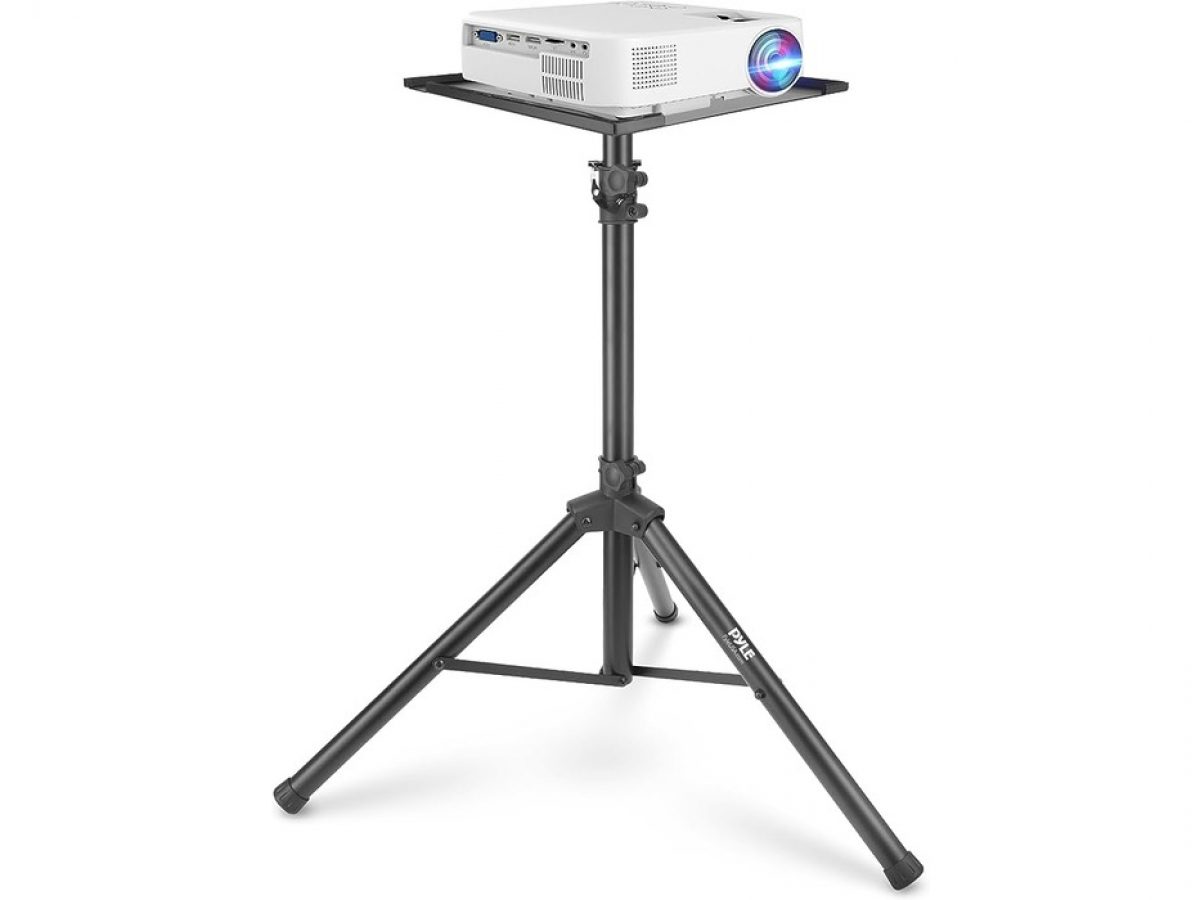Introduction
Welcome to the fascinating world of projectors! These incredible devices have become a staple in both professional and personal settings, offering a larger-than-life viewing experience. You might have wondered how projectors are able to produce deep, rich blacks and create a stunning visual display. In this article, we will explore the intricate mechanisms behind a projector’s ability to create black and delve into the technologies that enable this phenomenon.
Projectors rely on the manipulation of light to create images on a screen or surface. Understanding the role of light in projector technology is crucial to comprehending how black is formed. By controlling the amount and intensity of light, projectors create an intricate interplay of colors and shades that result in a visually captivating experience.
In order to grasp how projectors create black, it’s important to understand how colors are formed. Colors are produced by the combination of three primary colors: red, green, and blue. By varying the intensity of these three colors, projectors can create a vast array of shades and hues that ultimately blend together to form a complete image. However, it’s the absence of any light that creates the powerful and dramatic color we perceive as black. But how exactly is this absence of light achieved in projectors?
The contrast ratio is a key component that influences a projector’s ability to create black. It measures the difference between the brightest white and the deepest black a projector can produce. The higher the contrast ratio, the better a projector is at delivering vibrant colors and deep blacks. But contrast ratio alone is not the only factor at play when it comes to producing blacks in projectors.
Two popular technologies used in projectors that play a significant role in creating blacks are LCD (Liquid Crystal Display) and DLP (Digital Light Processing). These technologies manipulate light differently, resulting in distinct approaches to creating black. Let’s explore how each of these technologies contributes to the black levels in projectors.
Stay with us as we unravel the mysteries behind how projectors create black and delve into the specifics of LCD and DLP technologies. By the end of this article, you’ll have a comprehensive understanding of how projectors achieve true blacks and deliver stunning visual experiences. So, let’s dive in!
The Role of Light in Projectors
Light is the foundation upon which projectors create their visual magic. Understanding the intricate relationship between light and projectors is crucial in comprehending how black is created. Projectors work by illuminating a surface or screen with light, which then reflects or passes through various components to create a vibrant and dynamic image.
When it comes to projectors, the intensity and control of light are essential. The brightness of the light emitted determines the overall picture quality, while the control of light enables the creation of distinct colors and shades. Projectors achieve this control by utilizing different technologies and techniques.
A projector’s light source plays a vital role in the quality of the projected image. Today, the most common light sources used in projectors are light-emitting diodes (LEDs) and high-intensity discharge (HID) lamps. These light sources offer excellent color reproduction and longevity, ensuring consistent image quality over time.
The light emitted from the source then passes through various optical components, such as lenses and filters, that help refine the light before it reaches the surface or screen. These components not only focus and shape the light but also ensure that it is dispersed evenly across the entire projection area.
Once the light reaches the surface or screen, it interacts with the material and its properties. The screen material is specifically designed to reflect or transmit light in a controlled manner, ensuring optimal viewing angles and brightness. The choice of screen material can greatly impact the overall projection quality, including the ability to produce deep blacks.
Proper calibration and adjustment of the projector’s brightness and other settings are vital in achieving the desired picture quality. Projectors often feature various modes and settings that allow users to customize the brightness, contrast, and color temperature according to their viewing preferences and the environment in which the projection is taking place.
Additionally, ambient light conditions can significantly impact a projector’s performance, particularly when it comes to creating blacks. In dark rooms or spaces with controlled lighting, projectors have an easier time achieving deep, true black levels. However, in brighter environments, such as well-lit conference rooms or outdoor settings, projectors may struggle to produce the same level of black due to the presence of ambient light.
In summary, light serves as the building block in projector technology. It provides the necessary illumination for projectors to create captivating images. Through the use of sophisticated light sources, optical components, and screen materials, projectors can harness and manipulate light to deliver impressive visuals. Understanding the role of light in projectors is crucial in comprehending how projectors create black and achieve optimal picture quality.
How Colors are Formed
The vibrant colors we see on a projector’s display are created through a combination of primary colors: red, green, and blue. By varying the intensity and proportion of these three colors, projectors are able to produce a wide spectrum of hues and shades.
Red, green, and blue are known as the additive primary colors. When these colors of light are combined at full intensity, they form white light. However, by controlling the intensity of each primary color, projectors can create various shades and even the absence of light, which is perceived as black.
Each primary color contributes differently to the overall color formation. Red light stimulates the red-sensitive cones in our eyes and gives rise to the perception of red hues. Similarly, green light stimulates the green-sensitive cones, and blue light stimulates the blue-sensitive cones, allowing us to perceive the respective colors.
Projectors create colors by allowing different amounts of the primary colors to pass through or reflect off microscopic color filters. These filters are typically placed in front of the light source or within the projector’s optical components. By selectively blocking or transmitting specific primary colors, projectors generate a vast range of colors that combine to create lifelike images.
Furthermore, projectors utilize a color wheel, consisting of differently colored segments, to further refine color accuracy and create smooth transitions between hues. The color wheel spins rapidly, and as the light passes through the rotating segments, it determines the specific color that is projected at any given moment.
It’s important to note that while projectors can produce a wide gamut of colors, the accuracy and vibrancy of these colors can vary. Factors such as the quality of the color filters, color reproduction capabilities of the light source, and the overall calibration of the projector can influence color accuracy and fidelity. Calibration and color adjustment play a vital role in achieving true-to-life colors and accurate color representation.
With advancements in technology, projectors are now capable of achieving impressive color accuracy and reproducing a wide color gamut, making them suitable for various applications such as home theater systems, professional presentations, and even digital art installations. By carefully manipulating the primary colors and using advanced color reproduction techniques, projectors are able to deliver stunning visuals that bring images and videos to life with vibrant and realistic colors.
In summary, projectors create colors by manipulating the primary colors of red, green, and blue. By varying the intensity and combination of these colors, projectors generate a broad spectrum of hues and shades. Through the use of color filters, color wheels, and precise calibration, projectors can achieve accurate and vibrant color reproduction, enhancing the visual experience for viewers.
The Contrast Ratio
The contrast ratio is a crucial aspect of a projector’s ability to create impactful images, particularly when it comes to displaying deep blacks. It measures the difference in luminance between the brightest white and the darkest black that a projector can produce.
A higher contrast ratio indicates a greater disparity between the brightest and darkest areas of an image, resulting in more defined and visually striking visuals. In terms of black levels, a higher contrast ratio allows projectors to achieve deeper shades of black, enhancing the overall image quality and adding depth to on-screen content.
The contrast ratio is typically expressed as a numerical value, such as 5000:1 or 10000:1. The first number represents the luminance level of the brightest white, while the second number represents the luminance level of the darkest black. For example, a 5000:1 contrast ratio means that the brightest white is five thousand times brighter than the darkest black.
It’s important to note that the achievable contrast ratio can vary depending on the ambient light conditions, screen material, and the technology used in the projector. In ideal dark room conditions, projectors with high contrast ratios can deliver exceptional black levels that enhance the overall viewing experience.
However, in well-lit environments with significant ambient light, projectors may struggle to maintain a high contrast ratio, potentially resulting in less defined blacks and a reduction in overall image quality. In such situations, using ambient light rejection screens or adjusting the projector settings can help mitigate the impact of ambient light on the contrast ratio and preserve deeper black levels.
Manufacturers often provide specifications for contrast ratio, but it’s worth noting that the actual contrast performance experienced in real-world scenarios can vary. Factors such as the quality of the projection surface, the projector’s calibration, and the content being displayed can influence the perceived contrast ratio.
It’s important to consider the intended use and viewing environment when selecting a projector based on contrast ratio. If your primary focus is on creating a captivating home theater experience or showcasing visually stunning content in controlled lighting conditions, opting for a projector with a higher contrast ratio can help achieve deeper blacks and enhance image quality.
However, if your projection needs include well-lit rooms or environments where ambient light cannot be fully controlled, other factors such as brightness and color accuracy may need to be prioritized over the contrast ratio.
In summary, the contrast ratio plays a significant role in a projector’s ability to create deep blacks and enhance image quality. A higher contrast ratio allows for greater differentiation between the brightest whites and darkest blacks, resulting in more defined and visually striking visuals. However, it’s important to consider other factors such as ambient light conditions and screen material when assessing the impact of contrast ratio on overall image performance.
The Role of LCD and DLP Projector Technology in Producing Blacks
When it comes to creating blacks in projectors, LCD (Liquid Crystal Display) and DLP (Digital Light Processing) technologies play a significant role. Both technologies approach the task of producing blacks in different ways, resulting in varying levels of contrast and black performance.
Let’s start with LCD projectors. In LCD technology, light is passed through three separate LCD panels – one each for red, green, and blue – before being combined to form the final image. LCD panels control the passage of light through the use of liquid crystals that can either allow light to pass or block it entirely.
To create black, LCD projectors close the liquid crystals completely, blocking any light transmission. However, due to the nature of liquid crystals, some light leakage may still occur, resulting in a slight grayish tint rather than true black. This is known as the “black level” and can vary between different LCD projectors.
On the contrary, DLP projectors use microscopic mirrors to reflect light. These mirrors can tilt rapidly to direct light either towards the screen or away from it. When a mirror tilts away from the screen, no light is reflected, resulting in black since no light reaches the viewer’s eyes.
This mirror-based technology allows DLP projectors to produce more pronounced blacks compared to LCD projectors. The absence of light is more complete, resulting in deeper and more saturated black levels. DLP projectors are renowned for their ability to deliver excellent contrast ratios and immersive viewing experiences.
However, it’s worth noting that both LCD and DLP projectors have made significant advancements in recent years, narrowing the performance gaps. LCD projectors, particularly those utilizing advanced technologies like LCoS (Liquid Crystal on Silicon), have improved their black levels and contrast ratios, approaching the levels once exclusive to DLP projectors.
Additionally, the presence of an iris control mechanism further enhances black performance in both LCD and DLP projectors. This feature allows the projector to dynamically adjust the size of the aperture, regulating the amount of light that passes through. By closing the aperture in darker scenes, the projector can further enhance black levels, resulting in a more immersive viewing experience.
In summary, both LCD and DLP projector technologies play a significant role in producing blacks. LCD projectors utilize liquid crystals to block light transmission while DLP projectors utilize microscopic mirrors to reflect or deflect light, resulting in deeper black levels. Advancements in both technologies, along with the inclusion of iris control mechanisms, have improved black performance and contrast ratios, providing viewers with more immersive visuals.
How DLP Projectors Create Black
DLP (Digital Light Processing) projectors employ a unique technology that enables them to create deep blacks and produce high contrast images. The way DLP projectors achieve black is through the use of millions of microscopic mirrors that can tilt rapidly.
Each mirror in a DLP projector represents a pixel in the projected image. By tilting the mirrors in different directions, the projector can control the amount of light that is reflected towards the screen. When a mirror is tilted away from the screen, no light is reflected, creating black as the absence of light reaches the viewer’s eyes.
This mirror-based approach to projection provides several advantages when it comes to displaying black. Firstly, because the mirrors completely block the light, the black produced by DLP projectors is typically deeper and more pronounced compared to other technologies.
Additionally, the rapid tilting of the mirrors in DLP projectors allows for precise control over the display of black. This is especially important in scenes that require a high level of contrast, as the quick response time of the mirrors ensures that black areas remain truly black even in fast-moving scenes.
Advancements in DLP technology have significantly improved the black performance of projectors. In older DLP models, a phenomenon known as “rainbow effect” could occur, where certain viewers could perceive momentary flashes of red, green, and blue colors. This effect was especially noticeable in high-contrast scenes. However, modern DLP projectors have greatly minimized the occurrence of rainbow effect, resulting in an improved viewing experience with deep, accurate blacks.
It’s worth noting that while DLP projectors excel in creating black, they may not be the ideal choice for every situation. In environments with significant ambient light or where color accuracy is of utmost importance, other technologies like LCD or LCoS (Liquid Crystal on Silicon) may offer better performance.
In summary, DLP projectors create black through the use of microscopic mirrors that can tilt rapidly. By reflecting or deflecting light away from the screen, DLP projectors achieve an absence of light that is perceived as black. The rapid response time of the mirrors ensures deep, accurate blacks, and minimizes the occurrence of the rainbow effect. DLP technology provides a compelling option for those seeking high contrast and immersive visual experiences.
How LCD Projectors Create Black
While DLP (Digital Light Processing) projectors create black by blocking the reflection of light, LCD (Liquid Crystal Display) projectors take a different approach. LCD projectors create black by controlling the passage of light through liquid crystals.
An LCD projector consists of three separate LCD panels – one each for red, green, and blue – which work together to form the projected image. These panels consist of countless liquid crystals that can either allow light to pass through or block it completely. When the liquid crystals are closed or in a “twisted” state, they prevent the transmission of light, effectively creating black.
To create a colored image, LCD projectors allow light to pass through different combinations of the red, green, and blue LCD panels. By controlling the intensity and timing of the light passing through each panel, the projector can produce a wide range of colors and shades. However, to create black, all three LCD panels close their liquid crystals, blocking all light from coming through.
While LCD projectors are successful in creating black, a small amount of light leakage can occur due to the nature of liquid crystals. This can result in a slight grayish tint on the projected black areas, rather than achieving a true deep black. However, advancements in LCD technology, such as improved panel design and enhanced light-blocking capabilities, have significantly reduced this light leakage, resulting in improved black performance.
It’s worth noting that LCD projectors can also incorporate additional techniques to enhance black levels. One such technique is the use of a dynamic iris control mechanism. This feature adjusts the size of the aperture based on scene brightness. In darker scenes, the aperture closes, reducing the amount of light passing through and enhancing black levels. In brighter scenes, the aperture opens wider to allow more light, ensuring optimal brightness and contrast.
Furthermore, advanced LCD projectors may incorporate technologies like LCoS (Liquid Crystal on Silicon), which provide improved black levels and contrast ratios. LCoS projectors offer better light-blocking capabilities, resulting in deeper and more pronounced blacks.
Overall, LCD projectors have made significant strides in improving their black performance over the years. While they may not achieve the same level of black depth as DLP projectors, advancements in LCD technology, coupled with additional techniques like dynamic iris control and the incorporation of LCoS, have enhanced the ability of LCD projectors to produce deep blacks and deliver impressive image quality.
In summary, LCD projectors create black by controlling the passage of light through liquid crystals. When these crystals are closed, they block the transmission of light, resulting in black. While LCD projectors have traditionally had challenges achieving deep blacks due to minor light leakage, advancements in technology and the incorporation of techniques like dynamic iris control and LCoS have greatly improved black performance, enabling LCD projectors to deliver impressive image quality.
The Role of Iris Control in Projectors
Iris control plays a significant role in a projector’s ability to enhance image quality, particularly when it comes to black levels and contrast ratios. An iris is an adjustable aperture that controls the amount of light that passes through the projector’s optics. By dynamically adjusting the size of the aperture, projector manufacturers can optimize the balance between black levels, brightness, and contrast to deliver the best possible viewing experience.
The primary function of iris control is to enhance the reproduction of black by narrowing or widening the aperture in response to the luminance of the incoming video signal. In darker scenes where black is essential, the iris can close, reducing the amount of light passing through the projector’s optical system. This reduction in light allows the projector to achieve deeper black levels, enhancing the overall contrast and creating more detailed and immersive images.
Conversely, in brighter scenes or when viewing content that requires high brightness levels, the iris can open wider, allowing more light to pass through. This wider aperture enhances the brightness of the image while maintaining optimal contrast. By dynamically adjusting the aperture based on scene brightness, projectors can deliver consistent image quality across a wide range of viewing conditions.
It’s important to note that the specific implementation and capabilities of iris control can vary among different projector models. Some projectors may offer manual iris control, allowing users to manually adjust the aperture size based on their preferences and viewing environment. On the other hand, more advanced projectors may feature automatic iris control, where the projector dynamically adjusts the aperture based on the content being displayed and the ambient light conditions.
The effectiveness of iris control in enhancing image quality can also depend on factors such as the projector’s overall brightness and its ability to maintain color accuracy at different aperture sizes. Balancing these factors is crucial to prevent artifacts, such as visible iris movement or loss of color accuracy, that can negatively impact the viewing experience.
Additionally, the presence of iris control in projectors can also contribute to improved power efficiency. By reducing the amount of light output in darker scenes, projectors with iris control can conserve power and prolong the lifespan of the projector’s light source.
In summary, iris control plays a vital role in optimizing the balance between black levels, brightness, and contrast in projectors. By dynamically adjusting the aperture size, projectors can achieve deeper black levels in darker scenes while enhancing brightness and maintaining optimal contrast in brighter scenes. Iris control enhances the overall image quality and viewing experience, delivering more immersive visuals and providing power efficiency benefits.
Achieving True Blacks in Projectors
Achieving true blacks is a significant goal for projector manufacturers, as it contributes to the overall image quality and enhances the viewing experience. Several factors come into play when it comes to creating deep and accurate blacks in projectors.
First and foremost, the technology used in the projector plays a crucial role. Both DLP (Digital Light Processing) and LCD (Liquid Crystal Display) projectors have made advancements in black performance over the years. DLP projectors utilize microscopic mirrors to reflect or deflect light, resulting in more pronounced blacks. LCD projectors control the passage of light through liquid crystals, with advancements reducing light leakage and improving black levels.
The contrast ratio is another important factor in achieving true blacks. The contrast ratio measures the difference between the brightest white and the deepest black that a projector can produce. A higher contrast ratio allows for a greater differentiation between light and dark areas, resulting in deeper blacks and enhanced image quality.
Additionally, the use of iris control mechanisms can help optimize black levels. Iris control manipulates the aperture size, allowing projectors to adjust the amount of light passing through based on scene brightness. By dynamically closing the aperture in darker scenes, projectors can achieve deeper black levels, while opening the aperture in brighter scenes ensures optimal contrast and brightness.
Another crucial element in achieving true blacks is the quality of the projection screen or surface. The screen material should be designed to reflect or transmit light in a controlled manner to ensure optimal black levels. Some screens are specifically engineered to improve black performance, such as those with ambient light rejection properties.
Calibration is also essential in achieving accurate and deep blacks. Proper calibration ensures that the projector’s color, brightness, and contrast settings are optimized for the specific viewing environment. Calibration should be performed using a calibration device or by a professional to ensure accurate results.
Lastly, controlling ambient light in the viewing environment is vital in achieving true blacks. Darkening the room and minimizing sources of external light can significantly enhance the perception of black on the projection screen. Light from windows, lamps, or other sources can interfere with the perceived contrast and black levels, leading to a degraded viewing experience.
In summary, achieving true blacks requires a combination of factors, including the projector technology, contrast ratio, iris control, screen quality, calibration, and ambient light control. By utilizing advanced technologies, optimizing contrast, and carefully managing light, projectors can achieve deep and accurate black levels, enhancing the overall image quality and providing viewers with an immersive and visually captivating experience.
Conclusion
Understanding how projectors create black is key to appreciating the quality and immersive experience they provide. Through the manipulation of light and the development of advanced technologies, projectors have made significant advancements in producing deep, true blacks and enhancing overall image quality.
The role of light in projectors is foundational, with the control and intensity of light playing a crucial role in creating vibrant colors and contrasting black levels. By leveraging technologies such as LCD and DLP, projectors manipulate light in different ways to achieve varying levels of black performance.
DLP projectors utilize microscopic mirrors to reflect or deflect light, resulting in more pronounced blacks and impressive contrast ratios. On the other hand, LCD projectors use liquid crystals to control the passage of light, with advancements reducing light leakage and improving black levels over time.
The contrast ratio, which measures the difference between the brightest white and the deepest black, is another significant factor in achieving true blacks. Projectors with higher contrast ratios offer more defined and visually striking visuals, enhancing the overall viewing experience.
Techniques such as iris control further optimize black levels by dynamically adjusting the aperture size based on scene brightness. This ensures optimal contrast and brightness, enhancing the viewer’s immersion in the projected visuals.
In order to achieve true blacks, calibration, screen quality, and ambient light control also play important roles. Proper calibration of the projector’s settings ensures accurate color representation and depth of blacks. Using high-quality projection screens and controlling ambient light in the viewing environment further enhances the perception of black levels on the screen.
Thanks to these advancements and considerations, projectors can now deliver striking visuals with deep, true blacks and enhanced image quality across a variety of applications, including home theaters, presentations, and digital art installations.
As technology continues to evolve, we can expect further innovations and improvements in black performance, leading to even more immersive and visually captivating experiences with projectors.







